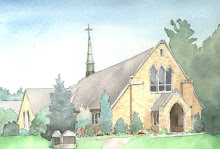The notes this week were prepared by Elizabeth Bryce. There are five postings, this introduction and one for each of the four lectionary readings. You might want to begin with one reading that connects to your questions this week. If you have feedback or comments, I would be happy to respond, and will try to do so later in the week.
Take a moment to centre yourself in prayer:
O Rock of Ages, we remember with thanks the power of your Word. That power works in us and in others, keeping alive our faith in your goodness, keeping alight our witness to your gospel. In times of weakness, preserve us, in times of willfulness, forgive us. Transform us, O God, and raise us from spiritual death to lives of liberating love, Amen.
All Saints’ Day –
• In early Christian scriptures (especially the epistles), the word “saint” referred simply to a person of faith, or collectively “saints” were a group of faithful believers who formed a worshipping community.
• Over the years, the church started to use the word “saint” to refer to people of special significance, and that tradition has evolved within the Roman tradition to a series of special recognitions, such as canonization.
• Theologically, it recognizes a common bond between Christians that is stronger than death, all Christians living and dead are saints of the church.
• Celebrated since the 7th century after Christ, on November 1st.
• Hallowe’en came later - in response to the holiness of All Saints Day, people needed an opportunity to get their demons/fears out beforehand. Combining it with the ancient Celtic day of the dead, called Samhain, “lost souls” go out and make their presence known the night before All Saints, but are vanquished by the saints’ presence at the dawning of the holy day.
Questions for reflection:
1. Who are the “saints”, the faithful ordinary people, whom you’ve encountered on your journey?
2. If you had to dress up as your personal demon or fear, what kind of costume would you wear?
Subscribe to:
Post Comments (Atom)




No comments:
Post a Comment